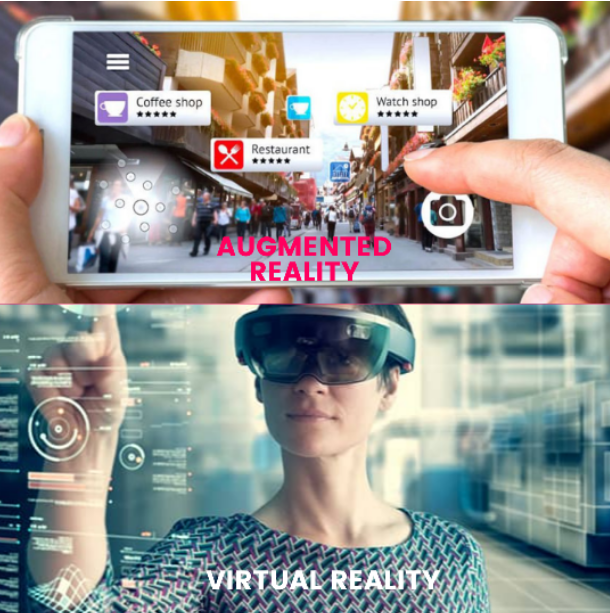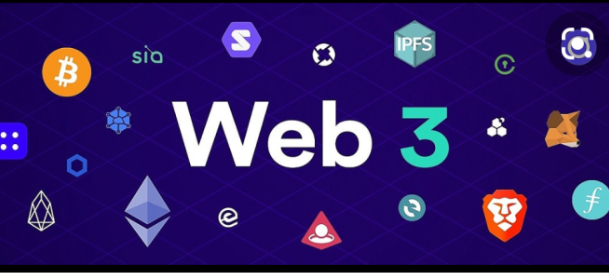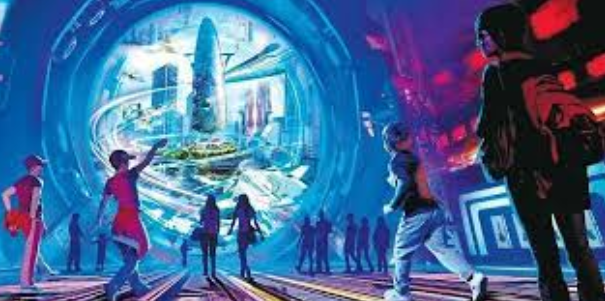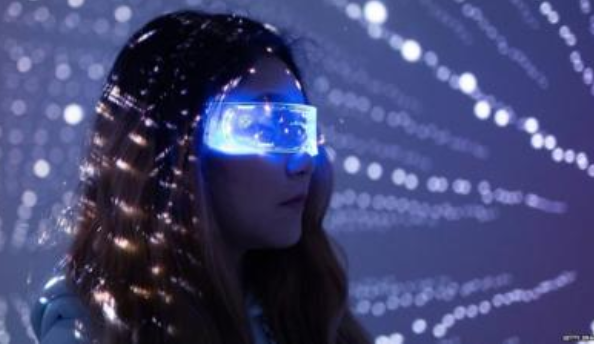After Mark announced Facebook’s name change to Meta on October 2, 2021, there was a Metaverse craze, and it felt like everyone knew what it was. Many who had no idea of what it was were silent, probably praying for the phase to pass. Others hid under the cloaks of those who knew all about it.
Understanding the Metaverse was even more difficult for Nigerians because we were not close to having such advancements in technology.
Now, it seems like the phase has passed, and no one is talking about it, especially Metaverse in Nigeria. But the Metaverse is still under construction and will surely come to the realization no matter how long it might take. This is why it’s important to know more about it and start making plans to tap into it as a Nigerian creative.
Some creatives went further to know about it, while most creatives didn’t. I’m guessing you’re reading this article because you want to know more about it. Hopefully, you won’t be disappointed.
In this article, you’re going to find out:
- What the Metaverse means
- Why the Metaverse
- How the Metaverse works
Table of Contents
What is the Metaverse?
You can’t talk about the Metaverse without talking about three components of the Metaverse: AR/VR, Blockchain, and Web 3.0.
While exploring these terms, we will describe their relatedness to the Metaverse.
-
Augmented reality/Virtual reality (AR/VR)

Augmented reality/Virtual reality (AR/VR)
Imagine having yourself (as a different person) interacting with fake objects or other fake persons in a fake world. Or your real self touching an animated object in your real world. This describes virtual reality and augmented reality respectively.
I understand it might be dancing in your head but read it again, probably three times.
If you’re still confused about Augmented reality, think of the facial filters you use on Snapchat. Familiar now?
Let’s move on to the blockchain. Just try to follow. We are trying to form a scenario from idea fragments.
-
Blockchain

Blockchain
The part of the blockchain that’s most related to the Metaverse is the NFTs. NFTs mean Non-fungible Tokens. Yes, that’s it. I never planned to give a technical definition.
A non-fungible token means a non-replaceable token. Meaning there’s only one unique copy. Just one.
Let’s use an example to illustrate.
Think of 100naira. One #100 note can be replaced by either two #50 notes, five #20 notes, or even ten #10 notes. This means a #100 note is fungible (replaceable).
However, let’s think of this same #100 note in another way. Let’s say a man called Charles created the #100 note and because he didn’t want any other person to use this #100, he signed his signature on it.
Then he went a step further to establish a policy in the government that no other naira notes can replace the #100 note. So no #10, #20, #50, or whatever naira note no matter how plenty it is, can equal #100.
Hence, there’s one signed #100 in this world. Meaning if this man doesn’t use his signed #100, it can’t be used in any other place.
This man can go further to create more #100 notes and on each #100 note. He signs a different signature but these signatures can be exclusive to just him.
We can call these #100 notes NFTs because even though you and I are sellers and get these notes from this man, we won’t have a #100 note that has the same signature.
All these notes will have different signatures, that’s why we say they are irreplaceable. The #100 note he gave you isn’t the same as the #100 note he gave me.
Got it? Let’s establish this idea on the blockchain now.
It’s mostly creators that create the NFTs. The NFT could be art, music, a game, or anything that can be created.
Let’s say a musician wants to sell his music (I’m tired of talking about art that everyone talks about).
He integrates one of his albums on the blockchain as an NFT. This mere action gives his album a unique digital signature.
Then he tags a price on it, probably 3ETH. When someone pays this ETH to get this NFT, there’s a transfer of ownership from this musician to the buyer, and this particular album cannot be owned by any other person that’s not the buyer.
However, this buyer can go further to sell these NFTs to other buyers. Whatever price he sells, a commission is given to the musician, the original creator. If you’re an affiliate marketer, you can liken this to affiliate marketing.
Take note that the sellers can sell as many copies as they want but each sale has a different digital signature from the other behind the scenes which makes them non-fungible.
Got it now? Let’s move on. Don’t worry, we will still talk about how this relates to the Metaverse.
-
Web 3.0

Web 3.0
It will be a bad idea to dive right into Web 3.0 without talking about Web 1.0 and Web 2.0.
Web 1.0 was the beginning of the internet. You only get to read information and you have no opportunity to interact by dropping comments, or likes.
It’s just like Wikipedia where you see text filled with hyperlinks that will take you to another block of text.
There was no Facebook, Instagram, or the likes to communicate with people.
Web 2.0 was the birth of the social media apps like Facebook, Twitter, and others. This time, you can create content and other people can create the content that you can interact with. These interactions can be likes, shares, or even following their pages.
But then these social media apps always sort your data. They have good intentions for it though. To show you content that seems interesting, they need your data. This data is often based on what you’re doing on the web.
Have you noticed that when you watch one Youtube video on a particular topic, your feed starts having videos related to that topic? That’s what they do when they get your data. They want you to stay on their apps longer.
This seems like the internet owns you. They collect from you and give it to you. It seems like they control you and you can’t do anything without these social media platforms. They have the authority to delete your account when they wish and they control who your content reaches.
This is what Web 3.0 wants to solve.
Web 3.0 is established to make you the owner of your content. No one can control who it reaches and no one can collect your data. You’re anonymous. You can share your content without using any social media platforms or any platform at all.
I had a misconception about Web 3.0 and I want to clarify that.
I thought Web 3.0 could do without the blockchain, but that’s not true.
Just like how you’re rewarded with likes and shares for sharing your content on social media platforms, you’re rewarded with cryptocurrencies for sharing your content on Web 3.0.
Secondly, your content on social media platforms is either words or pictures, right?
But do you know the form of your content on Web 3.0? NFTs. The Metaverse is empty without NFTs. And just like I explained in the section on NFTs, it is a part of the blockchain.
Hence Web 3.0 and blockchain can’t do without each other.
Why the Metaverse?
Currently, different companies are creating their Metaverse, and these companies have different goals for their Metaverse. Their different goals are the reasons for the Metaverse.

-
Work
The pandemic paved the way for many remote jobs, and workers started having meetings online via zoom, google meet, etc. Even though many employees have expressed happiness with this new work mode, there are still certain disadvantages.
One of them is that the workers won’t be monitored anymore, and this is difficult for certain jobs that require approval before going on to the next stage.
The Metaverse will solve this. Workers will still stay in their homes and get their jobs monitored by working in a digital world. Sounds like fun?
The Metaverse by Microsoft has this goal. Meetings and work environments won’t happen on flat screens anymore but in 3D spaces.
Read also: Artificial intelligence in Business
-
Education
The Metaverse has so much potential in education. Especially for Nigerian higher education institutions with crowded classrooms, which can be detrimental to students with health issues like Asthma.
Classrooms and live experiments can be hosted in the Metaverse just like in the real world.
Organizations like Virbela are already building Campuses that would look like real-world campuses. Their build of experiences is based on the psychology of students and teachers so that participants in their metaverse would feel nostalgic.
-
Social interaction
Ever thought of meeting with people like Bill Gates? You can do that on the Metaverse.
Social interaction on the Metaverse bridges the country’s borders that might hinder you from travelling all over the world. You get to see people you wouldn’t normally see with no costs at all. Unless you’re counting the cost of your VR headset.
When you’re missing your mama or papa, you don’t need to call them and imagine them talking to you or video call where you can’t touch them. With the Metaverse, you can see, touch, and hear them.
You can engage in various activities with different people and talk about life. Sounds sweet?
Companies like Meta and Vaulthill are creating a metaverse strictly for social interaction. Just like Vaulthill said, “with the metaverse, you can feel more human.”
-
Gaming
The Metaverse idea started from gaming. You might have probably played a game where a persona is representing you in the game and killing your enemies. Lol.
That’s something similar to the game in the metaverse. The difference is, that this one will be more immersive, and if you love having goosebumps with scary games, well, the metaverse games are for you.
Many companies are working on gaming in the metaverse. These companies include Decentraland, Axie Infinity, Gala, Chromia, and Sandbox.
Amongst these few sectors explained are the health, movies, and military sector, which can also explore the Metaverse.
How the Metaverse Works

How the metaverse works
Let’s discuss this as a scenario where you’re a participant in the Metaverse. While you read this, try to think of ways to tap into the Metaverse as a Nigerian creative.
Let’s say you want to go to class in the Metaverse.
You connect your Cryptocurrency wallet to the Metaverse as you put on your VR headset.
You want to choose the clothes and shoes representing you in the Metaverse, but you don’t like any. So you look for one up for sale and purchase them in exchange for your cryptocurrency, probably Ethereum.
Finally, you’re ready for class and go into the Metaverse.
You see your classmates as different people in different personas, they tell you their names, but you don’t know any of them facially.
You sit in the class and receive your lectures. When you’re confused, you raise your hands to ask questions and your classmates do the same.
Classes are over, and you want to leave. Suddenly your real self removes the headset, and you’re out of the virtual school environment.
This is just a part of how to spend your life in the Metaverse. You can do anything, whether going for health consultations, music concerts, parties, games, and so on.
Don’t forget to subscribe to our newsletter.
Opportunities in the Metaverse
There are so many opportunities in the Metaverse but let’s talk about the ones in this scenario I gave above.
The clothes, shoes, and personas are NFTs from creators. These creators could be Fashion designers for the clothes, and virtual material designers for the clothes and shoes. The personas could be NFT designers and 3D artists/animators.
Entering the classroom, a virtual interior designer can do the chairs and tables. An architect can organize the structure of the school building.
You can’t get a feel of all these without the developers bringing them into functionality.
These are just very few of the kinds of skills you can contribute to the Metaverse. Just this mere scenario can’t happen without many creatives contributing to it.
Still, confused about the Metaverse? Drop your questions in the comment section, also do well to join our Whatsapp Community to learn more.
About Author
- Op-Ed are articles published by guest authors. We no longer accept guest posts. However, we are still open to adding long-term content contributors to our team of insightful writers. To write for us, please check out inisght.ng/guest-post.
Latest entries
 Business InsightsMarch 27, 2024Effective Strategies for Managing Cash Flow in a Nigerian Business
Business InsightsMarch 27, 2024Effective Strategies for Managing Cash Flow in a Nigerian Business

 Business InsightsFebruary 12, 2024Privacy Policy for Business Websites: All You Need to Know
Business InsightsFebruary 12, 2024Privacy Policy for Business Websites: All You Need to Know


6 comments
You’ve really simplified the whole thing for the ordinary people… Ready Player one is one that can help people see what this is all about ..Good read… Great Job…Kudos
You’ve really simplified the whole thing for the ordinary people… Ready Player one is one movie that can help people see what this is all about ..Good read… Great Job…Kudos
Mehn this is awesome thanks for this
Thanks for sharing the knowledge 👍, so impactful, keep it up. I need more of this
Good read. Great job.
While at it, I could only think of ‘The Matrix’.
Thank you for simplifying this Nancy. I have sent you a connection request on LinkedIn for a possible project.